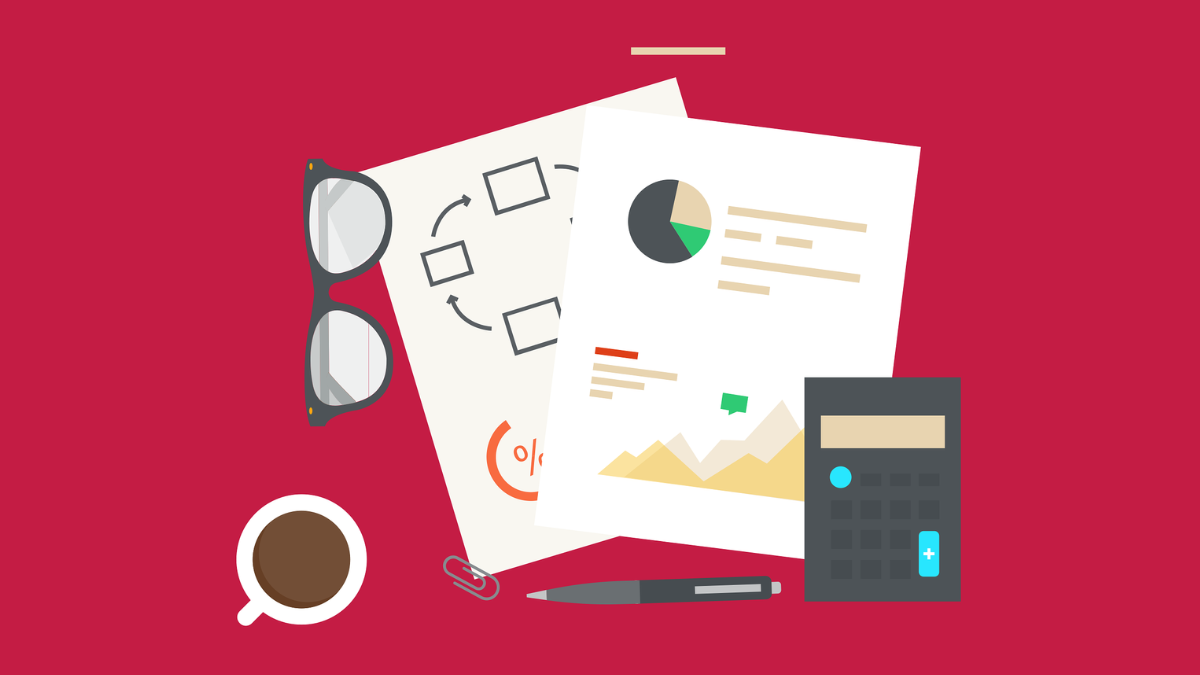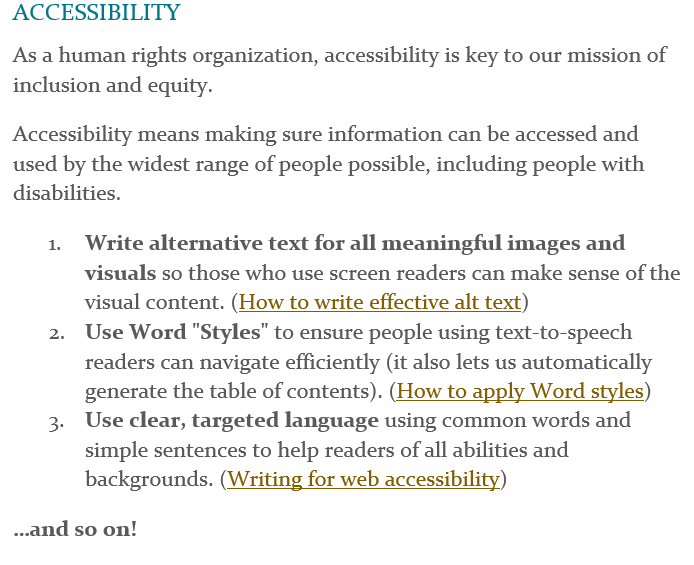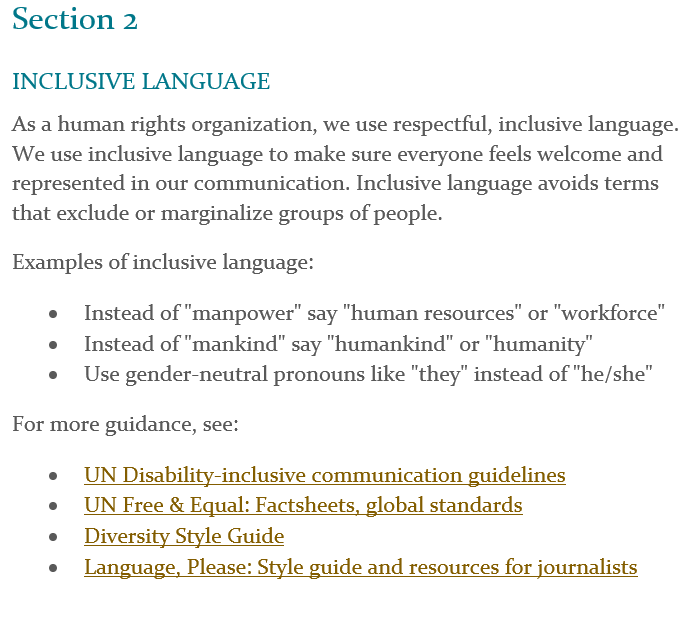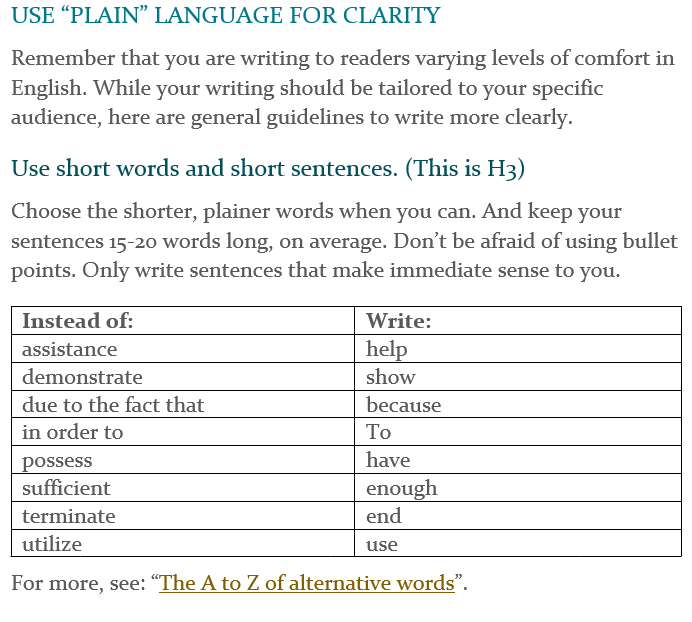
Want to get more people in your organization to use plain language and inclusive language and follow accessibility practices? Word templates may be your friend.
I used to think Word templates were only good for making a document look nice. But templates may be a powerful tool to reach a whole organization with guidelines and tips on how to write more clearly, use inclusive language, and make a more accessible document.
Well-known advantages of templates
Most of us recognize that using templates is useful for organizations and solopreneurs.
Templates can
- promote the brand image by treating material in a consistent manner
- set a standard for the organization’s materials (which then makes the brand look even more professional)
- save staff time and effort because staff don’t have to start from zero in preparing each document’s content, structure, and design
TIP: Treating materials consistently also helps keep your writing clear.
Templates as a teaching tool
But could we also use templates as a training tool?
After all, templates get a lot of views—especially if everyone in the organization is required to use them—and reach way more people than one person possibly could with editing and training.
And when handed a new template, many users are actually looking for instructions on how to use it. So why not use that precious attention to teach them how to write more clearly, use inclusive language, and make the document more accessible?
Ideas to try
A few months ago, one UN agency I work with went through a rebranding exercise. I wasn’t asked but I made suggestions on how to improve the organization’s templates. To my excitement, my ideas were incorporated 🎉
So here are some ideas to promote plain language, inclusive language, and accessibility in the organization through a Word template.1
Where the template has a photo (for example, a cover image), add instructions not only on how to replace the image but how to add alt text and why that’s important.
Insert an automatically generated table of contents with instructions on how to update it. Explain that having correct outline/heading levels helps people using assistive devices to efficiently navigate the document.
Include placeholder text in the different styles, such as H2, H3, normal, bulleted list, quotes, captions, so users can see them in action. Explain how to apply the styles and why that might be important for accessibility and clarity.
Use placeholder text to educate. For example:
- Share what defines your brand’s voice
- Define who your target audience is or help the user define who their target audience is
- Give tips on writing in plain language
- Give examples of inclusive language
- Add links to resources
TIP: If you’ve created custom heading styles, make sure they are set to the correct outline levels.2 Otherwise, they might not be recognized as headings.
Will it make a difference?
Stop recycling bad examples
We all know organizations recycle old documents as templates for new ones. After all, if a document was accepted in the past, then it must (presumably) be a good guide for the future.
The problem, however, is that the example documents are often poorly written. In the UN, language tends to be bloated and murky, a “piling of jargon upon jargon,” in the words of former UN editor W. H. Hindle. He points out that UN writers are
apt to believe that the sonorous polysyllables of previous United Nations reports must be used, particularly when these polysyllables have acquired an aura of sanctity….
—W. H. Hindle, A Guide to Writing for the United Nations, 1984.
Offering a good (and officially endorsed) template with clearer sample text may give people—many for whom English is a second or third language—the freedom to avoid the hard-to-understand bloated language and set the tone for something better.
We still need evidence
I don’t have evidence whether updating your organization’s Word template will lead to a noticeable change in the clarity, inclusivity, and accessibility of your documents.
Still, not trying seems like a wasted opportunity. Worst case, it will make no difference.3
I will say that when I updated one template for the unit I work in, adding simple instructions and example text, the drafts were noticeably better. (And made my job editing a lot easier.)
We’ll have to see if the recently updated templates for my UN agency will lead to any noticeable changes!4
Let me know in the comments other ideas or ways you’ve used templates to boost plain language, inclusive language, and accessibility!
Resources
- My favorite resources on digital accessibility
- RESOURCES: Plain language for international development
Want writing tips and updates on new content like this?
Plus: Explore my free downloads and connect with me on LinkedIn or Facebook.
Cover image by Megan Rexazin from Pixabay
Footnotes
- I don’t claim these to be proven “best” practices; I share these in hopes that they might prompt ideas of your own.
- Here’s another good article on changing outline heading levels, by Allen Wyatt at WordTips (but it doesn’t have screenshots).
- If you have evidence to support or debunk my theory, let me know in the comments!
- Unfortunately, there’s no budget to measure this 🤷♀️






Pingback: The 4 powers of clear writing in international development | The Clarity Editor
Pingback: How to write clearly but diplomatically: Tips for UN and international aid professionals | The Clarity Editor